Learn about the 10 Essential Medicinal Herbs to Grow in Your Garden for Making Home Remedies. I start with Calendula and work my way down to Yarrow, sharing how to grow and use these wonderful healing herbs. I also include links to research papers where you can learn more about these medicinal herbs.
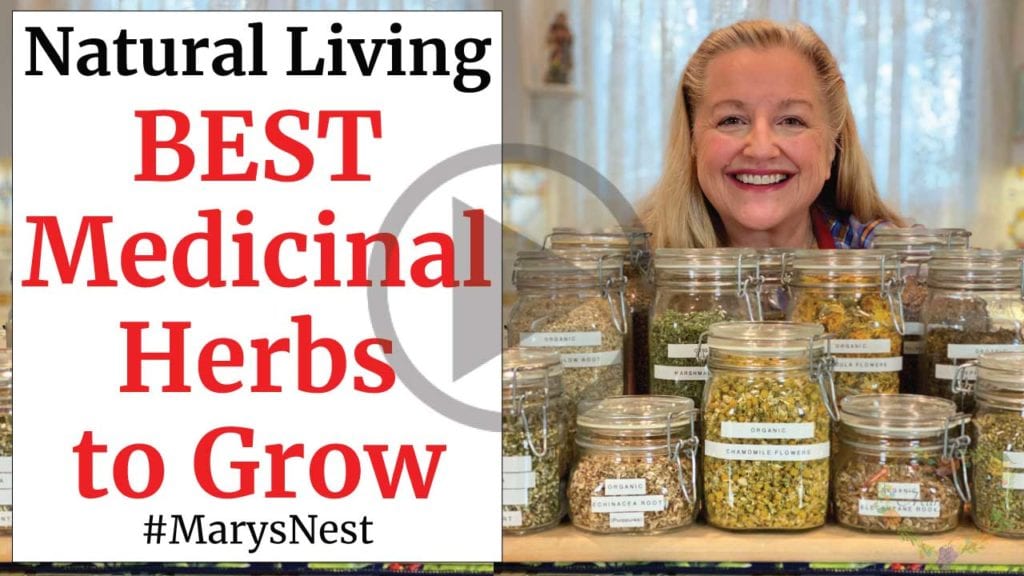
Affiliates note: As an Amazon Associate I earn from qualifying purchases. My content may contain affiliate links to products and services. If you click through and make a purchase, I’ll receive a small commission. It does not affect the price you pay.
Table of Contents
- Growing Medicinal Herbs
- A Word of Caution as to Medicinal Herbs
- Calendula
- Chamomile
- Echinacea
- Elecampane
- Lavender
- Lemon Balm
- Marshmallow (Marsh Mallow)
- Peppermint
- Thyme (Lemon)
- Yarrow
- Use Your Herbs to Create Seasoning Blends
- Get Started with Your Kitchen Garden
- How to Dry Herbs
- What Happened to My Garden During Our 2021 Texas Winter
- Download Your Free 36-Page Pantry List
- Kitchen Academy Videos
- More Herb Videos
- Shop for items used in this blog post or video
Here are the 10 essential medicinal herbs that I cover in my video and this blog post:
- Calendula
- Chamomile
- Echinacea
- Elecampane
- Lavender
- Lemon Balm
- Marsh Mallow
- Peppermint
- Thyme (Lemon)
- Yarrow
This is the first in a series of blog posts and accompanying videos where I will discuss medicinal herbs and share Master Recipes for making herbal oils, poultices, salves, teas, tinctures, and more! So be sure to subscribe to my Mary’s Nest YouTube channel so you won’t miss a video. 😊
And don’t worry if you don’t have an actual garden. It’s easy for anyone to grow herbs! Even a few pots on a small patio or city balcony—or a sunny windowsill—will allow you to become an herb gardener!
Note that this is not a sponsored blog post. I purchased all the herbs used in this video and blog post.
Update: Because of popular feedback and recommendations from my sweet viewers, I published a follow up video covering five more essential medicinal herbs to grow in your garden.
Growing Medicinal Herbs
If you are new to growing herbs or any plant, you first want to learn about what Hardiness Zone you live in. A Hardiness Zone is a regional designation that sets the lowest temperature range and the highest temperature range most likely to occur in any particular zone. Knowing your Hardiness Zone will help you to determine which plants will do best in your area.

Finding your Hardiness Zone
The United States Department of Agriculture (USDA) provides a detailed map to help you determine the Hardiness Zone you are located in. If you live outside of the United States, check with your local agriculture agency, as they may be able to provide you with the temperature ranges for your country.
I live in Central Texas and am in USDA Zone 8b. We have a relatively mild climate throughout the year, allowing me to grow a variety of herbs. So that I can be as successful as possible in choosing plants for my zone, I also consult our local extension service through Texas A&M University. Their site provides helpful information to guide me to the best varieties of herbs and plant varieties that will thrive in my area.
I highly recommend that you locate your local extension service to get information that will help you choose the cooking herbs, medicinal herbs, and plants that will thrive in your area. Extension services are generally part of large state universities here in the United States, and most have detailed websites.
A Word of Caution as to Medicinal Herbs
Although we may think of herbs as mere ingredients we toss in our pasta sauce, many herbs have potent medicinal properties and have been used as medicine for centuries. With this in mind, you need to approach herbs with knowledge and caution.
If you are pregnant, nursing, taking medication (over the counter or prescription), have allergies, or are thinking of using medicinal herbs with children, make sure you first talk to your doctor, pediatrician, or other health care professional. You want to ensure that the herbs you plan to use will not adversely affect you or your children. I can’t stress this enough! Herbs are medicine. Never be casual or negligent in their use.
Ok, let’s get started reviewing our 10 Essential Medicinal Herbs!
Calendula
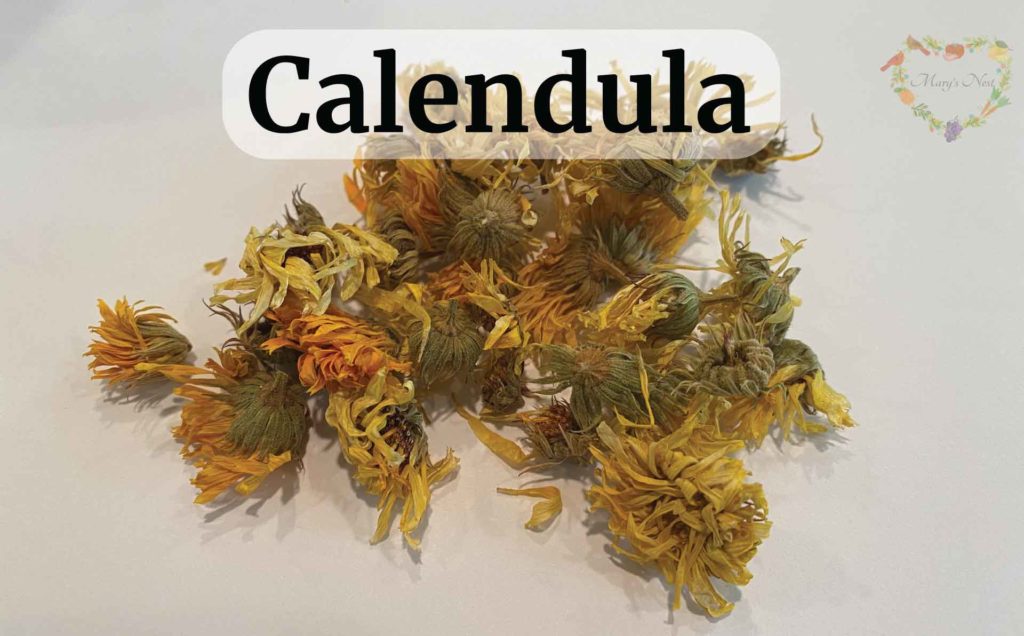
Calendula is such a pretty plant with bright yellow-orange flowers. But it is also a powerful plant that can help heal wounds—thanks to its cell regeneration properties.
Scientists and medical professionals have extensively studied Calendula for its wound healing properties. The following resources provide links to evidence-based research on animals and humans to support using this medicinal herb as a complementary treatment to Western medicine. So never underestimate Calendula!
- Wound Healing and Anti-Inflammatory Effect in Animal Models of Calendula officinalis L. Growing in Brazil
- A Prospective, Descriptive Study to Assess the Clinical Benefits of Using Calendula officinalis Hydroglycolic Extract for the Topical Treatment of Diabetic Foot Ulcers
How to Grow Calendula
Calendula is easy to grow by simply sowing the seeds directly into your garden soil. It is a perennial herb in most climates, which means that it will die back in the cooler months but should regrow come spring. If you live in an exceptionally cold climate, you may want to treat Calendula as an annual, replanting it in the spring. But keep in mind that it may self sow…so it may grow back all on its own once spring rolls around!
Calendula (Calendula officinalis) Product Links
- Farmhouse Teas (Get 10% off your order with my link and discount code MarysNest10)
- Mountain Rose Herbs
Chamomile
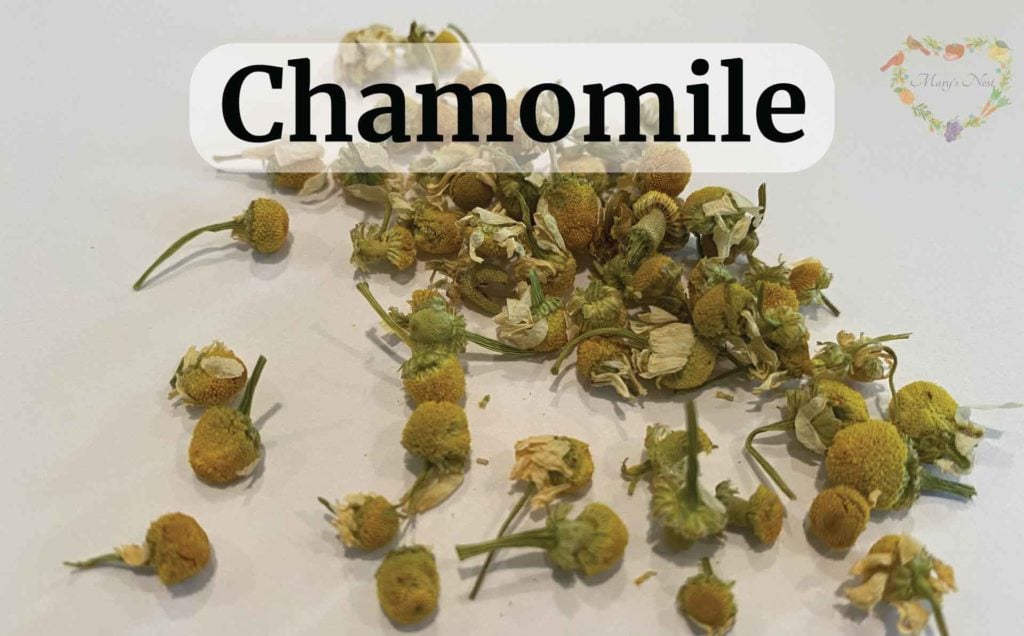
When most of us think of Chamomile, we often think of a herbal tea to help us sleep. Remember Sleepytime Tea, which was first introduced by Celestial Seasonings in 1972? The main ingredient was Chamomile!
But Chamomile is so much more than a sleep aid. It is also very rich in anti-inflammatory properties, which has raised the interest of researchers. In various preparations as a tea and as an ingredient in a salve or poultice, Chamomile has helped alleviate the pain associated with rheumatoid arthritis and muscle spasms, including menstrual cramps.
If you are prone to gastrointestinal disorders, including acid reflux and ulcers, a regular cup of Chamomile tea may be your best friend. And if you decide to start drinking Chamomile tea on a regular basis, you would be in good company. It is estimated that well over 1 million cups of this medicinal herb tea are consumed each day!
How to Grow Chamomile
If you are ready to grow some Chamomile, you can directly sow the seeds into your garden soil. For medicinal purposes, you’ll want to grow German Chamomile. And if you live in a cooler climate, you’re in luck! Chamomile actually likes weather that tends to be cooler in the summer.
But don’t worry. If you live in a hot climate like me, your Chamomile will flourish in the spring. Even if it goes dormant in the summer, it will be back. German Chamomile, although an annual, is a prolific self sower and will spread its seeds generously in your garden.
Chamomile (Matricaria recutita) Product Links
- Farmhouse Teas (Get 10% off your order with my link and discount code MarysNest10)
- Mountain Rose Herbs
Echinacea

If you have ever read the ingredients to a natural cold or flu remedy sold at health food stores, you probably saw Echinacea listed. This powerful herb is rich in antiviral properties and helps to boost our immune system. With a stronger immune system, we increase our body’s natural resistance to infections related to viruses, including upper respiratory infections.
Grow the Right Type of Echinacea
When it comes to growing Echinacea in your garden, make sure that you grow the right variety that is the richest in medicinal properties. So when looking for Echinacea seeds or plants, you want to search out those that are labeled purpurea. And don’t worry. This variety is easy to find, and it is often nicknamed Purple Coneflower for the glorious flowers it produces. It’s a real show stopper in the garden!
Echinacea is easy to grow, and you can sow the seeds directly into your garden. This medicinal herb is heat and drought tolerant, and it will attract all sorts of birds and pollinators to your garden. Plus, the cut flowers make for a delightful bouquet.
When Should You Harvest Echinacea?
Generally, it is the root of the Echinacea that is prized for its immune-boosting properties. You will want to harvest the roots in the fall when they are two to three years old. After that, the roots will become very woody and have fewer medicinal properties.
Since you will be harvesting the roots, make sure you plant lots of Echinacea since you will want to leave some of the plants intact for future harvests. Echinacea is a generous self-sower and will gladly re-seed in your garden. You’ll have an endless supply of Echinacea plants year after year!
Don’t Forget About the Echinacea Leaves and Flowers
Although the roots are the star of the show, do not underestimate the power of the Echinacea leaves and flowers. They may not be as strong as the roots, but they also contain medicinal properties.
You can start a beneficial tincture in the spring by adding the Echinacea leaves to a jar filled with alcohol. Allow the leaves to steep. Over time when the Echinacea flowers bloom, you can add a few flowers to your jar as well. And once you harvest the roots at the end of the season, you can place them in your jar too. You will now have an herbal tincture that will include the immune-boosting properties of the entire Echinacea plant!
Echinacea (Echinacea purpurea) Product Links
- Farmhouse Teas (Get 10% off your order with my link and discount code MarysNest10)
- Mountain Rose Herbs
Elecampane
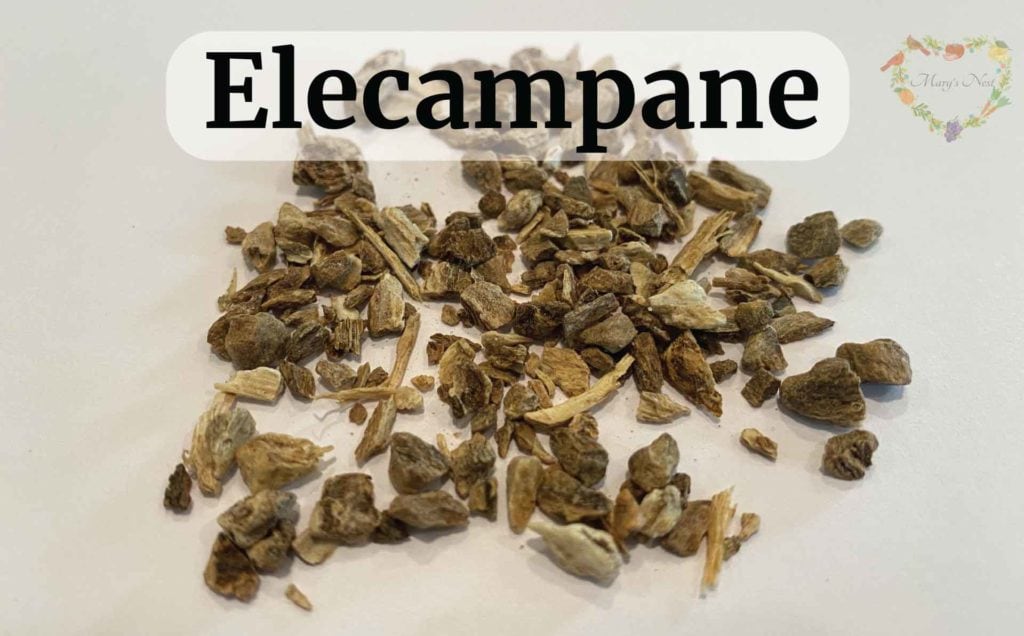
If you read the story about the mythical character Helen of Troy, you may have seen Elecampane mentioned. Helen was known to carry this herb with her whenever she traveled so she could make Elecampane tea. She thought this tea would protect her from developing an upset stomach from all the different exotic foods she might eat while away from home.
Studying Elecampane’s effects on Intestinal Parasites
Drinking a tea made from the root of Elecampane was actually a practice of real people during ancient times. They believed that Elecampane could protect them from stomach distress when eating unfamiliar foods. These bits of history led modern scientists to study Elecampane to discover exactly what this medicinal herb contained that might help to prevent digestive disorders. Some of the research surrounding Elecampane is still in its infancy, but scientists believe that it may be able to fight intestinal parasites.
And maybe this is why ancient travelers liked to keep Elecampane as part of their medicinal herbs. They had no idea about the quality and cleanliness of their food sources. So if they ate food that was infected with parasites, a tea made from Elecampane could have protected them from parasitic infestation. And as you can read in the following research link, throughout history, Elecampane and other herbs have been used by farmers to deworm their animals of parasites.
Elecampane Can Help With a Cough Too
When used to make a natural cough syrup, scientific studies have shown that adding Elecampane and other medicinal herbs to the syrup helps to quiet a cough more successfully than some other chemically-made over-the-counter medications.
Give Elecampane Plenty of Room in Your Garden
Consider adding this medicinal herb to your garden for its health benefits, as well as its beauty. Elecampane grows to about 5 feet high with yellow flowers, and it sports the nickname wild sunflower. If you decide to grow Elecampane, start with small plants that you either buy at a nursery or start from seed indoors and then transplant them into your garden.
Elecampane is a perennial, so it should come back in your garden year after year. But like Echinacea, if you will be harvesting its roots for medicinal purposes, be sure to do so when the plant is two to three years old.
You will want to harvest the Elecampane roots in the fall because that is when all the nutrients return to the roots. You’ll want to harvest the roots while they are still young because, as the plant ages, the roots will become very woody and lose some of their medicinal properties.
Elecampane (Inula helenium) Product Links
- Farmhouse Teas (Get 10% off your order with my link and discount code MarysNest10)
- Mountain Rose Herbs
Lavender
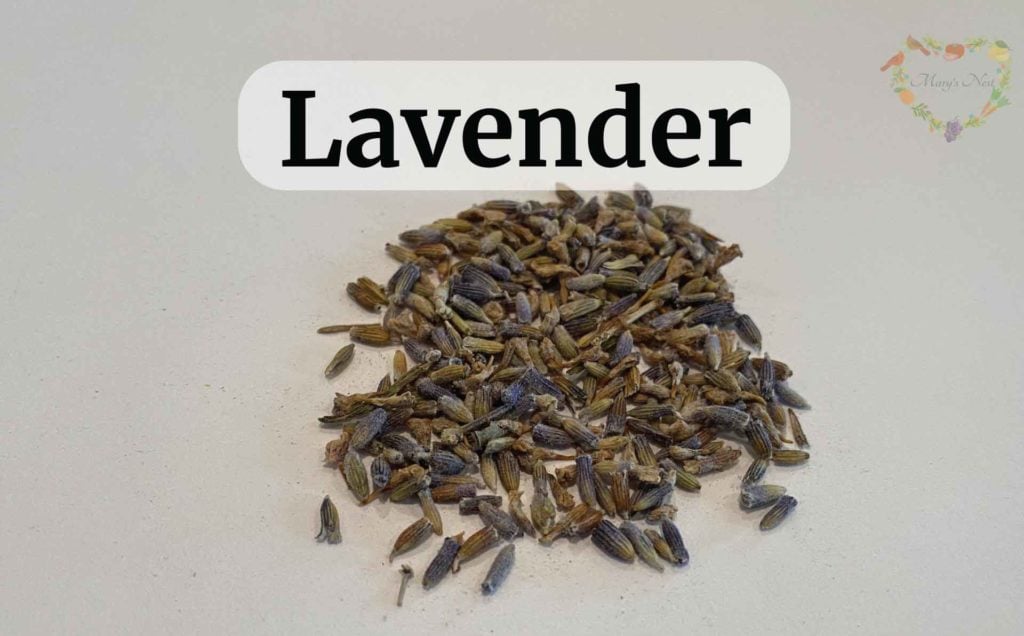
Many of us are familiar with the delightfully soothing fragrance of Lavender. This tranquil fragrance also gives Lavender the ability to relieve stress-induced inflammation, making it a useful medicinal herb to keep on hand. You can use Lavender in a bath soak to ease muscle tension and help induce a restful night’s sleep. Lavender tea is also credited with helping to relieve migraine headaches.
Lavender Can Help to Stamp Out Staph Infections
Lavender is rich in volatile oils that contain antibacterial, antifungal, antiviral, and antiseptic properties. (That’s the kind of benefit that we’re looking for in our medicinal herbs!) Clinical studies have found that Lavender can fight infections, including staph and strep. Scientists also discovered that this herb’s antifungal properties are effective against various fungus, including the stubborn Candida.
- The Antibacterial Activity of Lavender Essential Oil Alone and In Combination with Octenidine Dihydrochloride against MRSA Strains
- Antifungal Effect of Lavender Essential Oil (Lavandula angustifolia) and Clotrimazole on Candida albicans: An In Vitro Study
Which Lavender Variety Should You Choose?
There are many varieties of Lavender grown today. Even though you may not live in a traditional Mediterranean climate, such as the south of France where Lavender grows profusely, you have many options available to you. Your local extension service can help you select the best variety of Lavender for your area. (And you can talk with them about selecting other medicinal herbs too!)
How to Grow Lavender
When you decide to plant Lavender in your garden, start out with small plants from a local nursery. Trying to grow Lavender from seed can be challenging. Also, when planting Lavender, keep in mind that, for the most part, it loves full sun. However, if you live in a climate where the summer sun is exceptionally harsh, such as where I live in central Texas, Lavender will appreciate a bit of partial shade against the extreme afternoon sun.
Lavender, English (Lavandula angustifolia) Product Links
- Farmhouse Teas (Get 10% off your order with my link and discount code MarysNest10)
- Mountain Rose Herbs
Lemon Balm
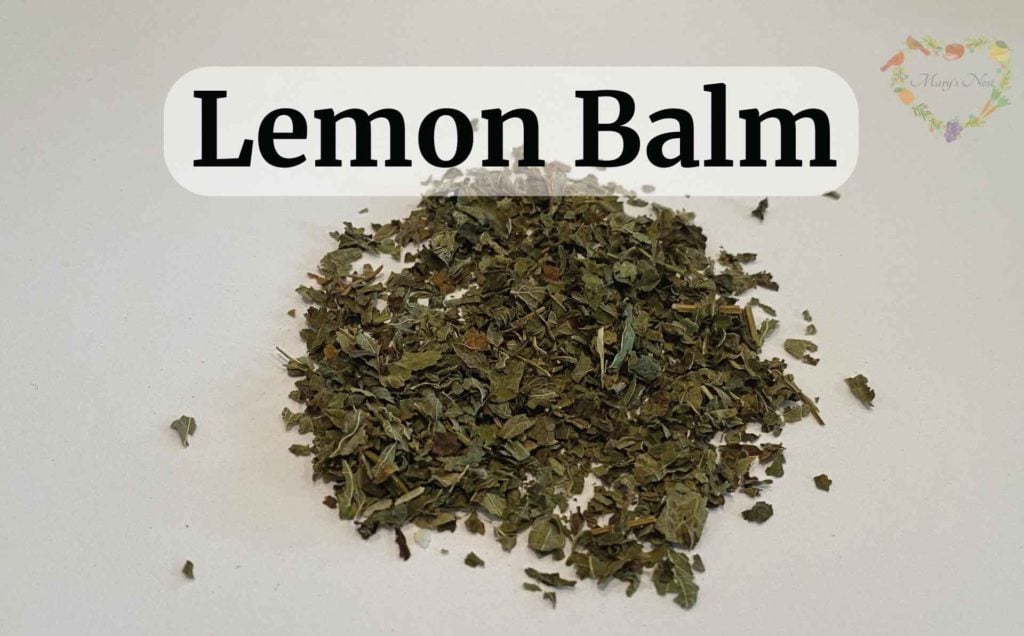
Throughout the centuries, Lemon Balm has been known as the “Elixir of Life.” How did it receive this honor? Ancient people believed that Lemon Balm had the ability to make people feel better all over.
The Secret to Lemon Balm’s Success
Today, science has uncovered Lemon Balm’s secret. When released in a tea or used in cooking, the volatile oils in its leaves act to calm the body’s nervous system and digestive system. Lemon Balm’s oils act as a sedative and an anti-spasmodic. No wonder people feel better when taking Lemon Balm!
After dinner, be sure to enjoy a cup of Lemon Balm tea. It will help you digest your meal thoroughly. And if you don’t have Lavender in your medicinal herbs cabinet, no problem. This refreshing tea will ensure that you have a restful night’s sleep.
And, oh, the fragrance! If you like the aroma of lemon, you will be over the moon in love with Lemon Balm. Its lemon fragrance is so strong that when you walk past it, you will be able to smell all its luscious lemoniness in the air!
How to Grow Lemon Balm
When growing Lemon Balm, you can sow the seeds directly into your garden soil. It is a perennial, so it will die back in the winter, but it should return in the spring. It does best in Hardiness Zones 4 through 9, but this medicinal herb self sows generously. If you are growing Lemon Balm in a colder climate, you should see tender shoots pop up in the spring, thanks to its generous spreading of seeds.
Lemon Balm (Melissa officinalis) Product Links
- Farmhouse Teas (Get 10% off your order with my link and discount code MarysNest10)
- Mountain Rose Herbs
Marshmallow (Marsh Mallow)
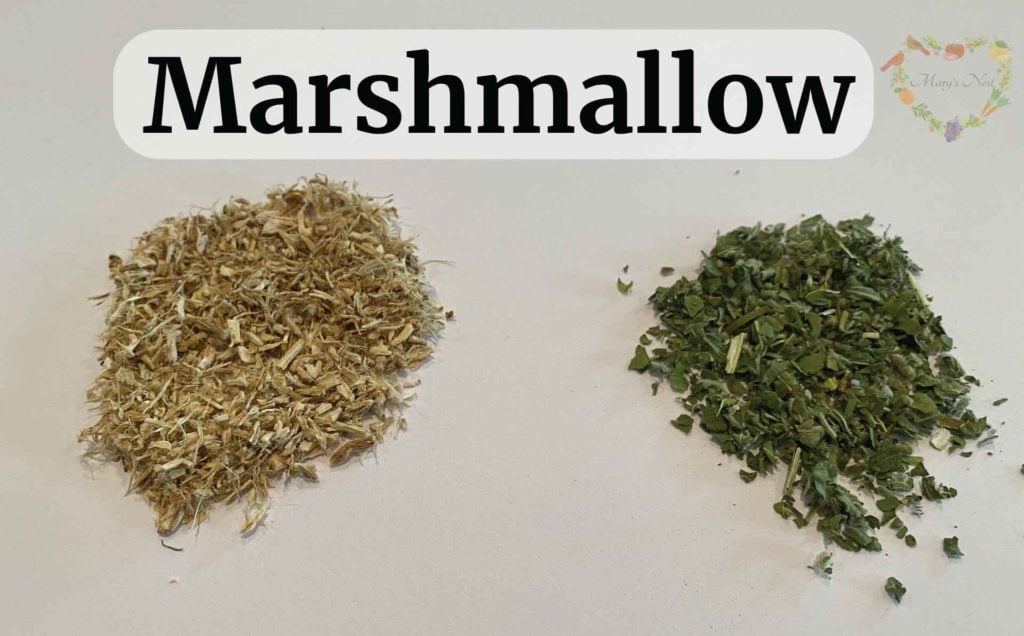
Marshmallow (or Marsh Mallow) is an herb that, yes, was originally used to make marshmallows! The root of the Marshmallow plant is rich in mucilage, which is a bit of a slimy substance, that was perfect for making sweet treats before the days of using ingredients like corn syrup.
Mucilage Soothes the Bronchial Passages and More
Thanks to its mucilage properties, Marshmallow root also makes a wonderful ingredient for home remedies relating to irritations of the bronchial passages or digestive tract. For one of the best home remedies, use Marshmallow to make homemade cough medicines to help quell a dry, nagging cough. Scientists can teach us a lot about the beneficial properties of medicinal herbs!
How to Grow Marshmallow
When it comes to growing Marshmallow, it’s often easier to start with small plants than growing this medicinal herb from seed. But if you want to try your hand at growing this herb from seed, you’ll have to sow the seeds in the fall, as they like to winter over in the cold before they germinate in the spring.
Once established, Marshmallow will grow well, and since it is a perennial, this herb will return every year in the spring. Like some of the other medicinal herbs, Marshmallow’s main healing powers are in the roots. You will want to harvest the roots in the fall when the plants are between two and three years old. But don’t worry about harvesting the roots—and in essence then—the whole plant. Although best started from small plants, if you leave a few plants undisturbed, they may self-sow in the fall and then return in the spring.
Just be sure to give your Marshmallow plenty of room to grow in your garden. It is a tall plant, growing up to 4 feet with green-gray leaves and lovely pink flowers. Marshmallow generally likes to grow in Hardiness Zones 5-8, but you can grow them in colder zones as an annual.
Marshmallow Leaf (Althaea officinalis) Product Links
- Farmhouse Teas (Get 10% off your order with my link and discount code MarysNest10)
- Mountain Rose Herbs
Peppermint

I love the lemony herbs, but I must say that Peppermint is my all-time favorite! I find its aroma to be absolutely heavenly. But before we talk about all its remarkable medicinal properties, I want to address some important things you need to know about Peppermint.
Be Sure to Corral Your Peppermint
Peppermint, like any mint, can be incredibly invasive. And if not managed appropriately, it can take over your garden. You might find yourself, as I once did many years ago, having a garden in which all you are growing is Peppermint!
So when you decide to plant your Peppermint, pots can be an excellent option. However, if you choose to put this medicinal herb in the ground, be sure to find a separate space away from the rest of your garden where it can grow freely and not take over! And once you get it in the ground, keep harvesting it. That will help to keep your Peppermint under control as well.
Experiment with Peppermint Wherever You Live
In general, Peppermint grows best in Hardiness Zones 5 through 9, but no matter where you live, be sure to experiment with this herb. It is one of the hardiest medicinal herbs, so you might discover you can be quite successful growing Peppermint no matter the climate.
When it comes to growing Peppermint or any mint, start with cuttings or small plants. Although not impossible, most mints don’t grow well from seed. But if you start with a cutting, it should establish itself quite quickly and provide you with a prolific amount of mint in no time!
Peppermint dries beautifully and maintains its strong scent and flavor even when dried. And speaking of drying herbs, this is one of the easiest things you can do to preserve your medicinal herbs. I show you how in my Drying Herbs tutorial video.
Peppermint is An Amazing Medicinal Herb
When it comes to Peppermint’s medicinal properties, many of us will immediately think of its ability to aid digestion. That is why it makes an excellent tea to enjoy after a meal. Peppermint tea will also freshen your breath after a particularly strongly-flavored meal, including garlic and onions.
Peppermint tea can also help to calm the spasms associated with vomiting. Plus, the strong minty flavor can help reduce the bitter taste left behind in one’s mouth after vomiting. (Sorry. I know that’s not a pleasant thought!)
An interesting use for Peppermint that is not as commonly known is its ability to relieve headaches. Simply inhaling the fragrance of this herb can help relieve nasal congestion and bring more oxygen to the brain to help stop a headache in its tracks.
Additionally, if you have a toothache and are waiting to visit the dentist, placing a few clean peppermint leaves around the inflamed tooth may bring you some relief.
In many ways, tea made with peppermint leaves provides incredible benefits. Scientific studies have found that peppermint tea has significant:
- Antimicrobial, antibacterial, and antiviral activities
- Strong antioxidant and anti-tumor actions
- Antispasmodic and analgesic properties
And as you’ll read in the following research study, Peppermint even shows promise to have some anti-allergenic potential.
Have I convinced you to add this amazing herb to your essential set of medicinal herbs? I hope so! 😊
Peppermint Leaf (Mentha x piperita) Product Links
- Farmhouse Teas (Get 10% off your order with my link and discount code MarysNest10)
- Mountain Rose Herbs
Thyme (Lemon)
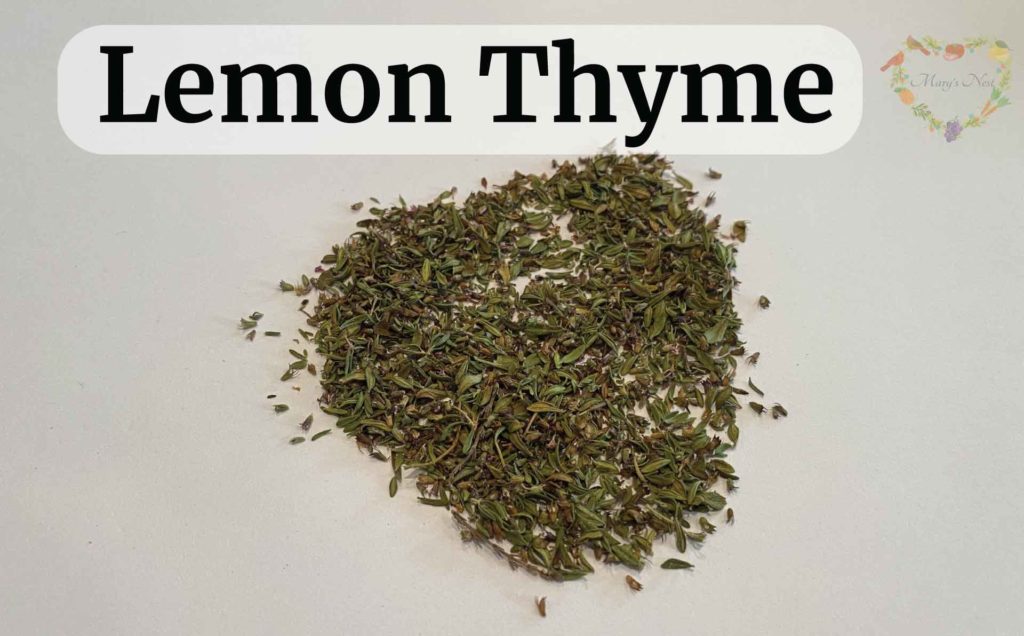
Thyme is one of those amazing herbs that is not only wonderful for culinary purposes, it also has a host of healing properties. But when it comes to growing Thyme for medicinal purposes, you need to know the right type of Thyme to grow. Basically, you have two choices for those varieties with the most volatile oils:
- Common Thyme
- Lemon Thyme
Of these two, Lemon Thyme is my favorite because Thyme can be quite strong. In the case of Lemon Thyme, the strong Thyme flavor is softened with lemon, and lemon happens to be one of my favorite flavors!
Medicinal Properties of Thyme
So what is Thyme good for? Thyme has very high antibacterial properties. Its strong disinfectant properties fight infection and can be used both externally and internally. Thyme is commonly used as a wash for external infections. You can also brew a Thyme tea to help ward off bacterial infections, such as pharyngitis (a bacterial infection that causes a sore throat).
If you have a sore throat, Thyme is your go-to medicinal herb. You can use Thyme to make a tea that you can gargle with to relieve the soreness and help kill the bacteria that might be causing the sore throat.
Thyme tea can be an excellent remedy for a cough. You can also use Thyme to make a cough syrup to soothe a sore throat and a dry hacking cough.
There’s more great news when it comes to Thyme. Have you been plagued with a nail fungus that appears to be resistant to modern medical treatments? If so, Thyme might be the answer. Because of its potent volatile oils, Thyme has been shown to combat nail fungus when used topically in its essential oil form.
How to Grow Thyme
When it comes to growing Thyme, we are all in luck! This medicinal herb is a hardy perennial that grows pretty much anywhere you plant it. All it asks for is the sun, and you can grow this herb simply by sowing the seeds right into your garden soil. Just remember to prune it back in the early spring to prevent it from getting woody. This will allow the new tender growth to sprout up.
Lemon Thyme (Thymus citriodorus) Product Links
- Farmhouse Teas (Get 10% off your order with my link and discount code MarysNest10)
- Thyme (Plain only)
- Mountain Rose Herbs
Yarrow

Yarrow is probably one of the easiest herbs to grow. And once you know how to recognize it, you will start to see it everywhere! It’s a hardy perennial that you can grow directly from seed. Once it is well established in your garden, this medicinal herb will come back every spring. Plus, it will self sow and create an abundance of Yarrow plants. Lucky you!
When to Avoid Yarrow
Before we continue, I want to refer you back to the top of this blog post, where I stress talking to your doctor before using any herbs in a medicinal capacity. When it comes to Yarrow, talking with your medical professional is exceptionally important if you are pregnant. Health care professionals generally recommend that Yarrow NOT be used by pregnant women. So do your research, talk to your doctor, and proceed with caution.
Medicinal Properties of Yarrow
Yarrow is rich in antiseptic, anti-inflammatory, and astringent properties. It is commonly used in herbal preparations for healing wounds and bruises. A Yarrow poultice is often used on sprains to help reduce the swelling.
Yarrow also has what is known as styptic properties, which means that it can stop bleeding. So this medicinal herb can be handy when working in the garden or kitchen. If you happen to give yourself a small cut, you can apply some clean yarrow leaves to the area, and the leaves should quickly help to stop the bleeding.
Yarrow (Achillea millefolium) Product Links
- Farmhouse Teas (Get 10% off your order with my link and discount code MarysNest10)
- Mountain Rose Herbs
Use Your Herbs to Create Seasoning Blends
In addition to using your herbs for medicinal remedies, you can also use your herbs to create seasoning blends. In the video below, I show you how to make 10 homemade seasoning blends, including the popular Herbs de Provence.
Another great way to make use of your herbs is to make herb salts. This easy process enables you to incorporate their wonderful flavors into your meals and take advantage of all their properties that contribute to good digestion.
Get Started with Your Kitchen Garden
If you are new to gardening but are not ready to start buying seeds or plants, be sure to try your hand at “scrap” gardening. It’s a fun way to get started on your gardening journey in a way that enables you to begin slowly and economically. I’ll show you how in my 10 Vegetables You Can Regrow from Kitchen Scraps to Create a Recurring Harvest tutorial video.
How to Dry Herbs
Herbs are easy to dry and do not require any special equipment. So that you can preserve your herb harvests all year long, watch my Drying Herbs video below. I’ll show you everything you need to know to dry your herbs successfully to preserve their maximum flavor and nutrition.
What Happened to My Garden During Our 2021 Texas Winter
Oh, dear! My kitchen garden took a real beating during our unprecedented week-long winter storm in Central Texas this February. But I’ll be rebuilding it this spring, and I’ll be sure to take you along with me!
Last year in 2020, before we were hit with the February 2021 Snowageddon, I took you on a little tour of my kitchen garden and how I was changing things around a bit with the help of my sweet son. Although things will look very different going forward—due to our week-long freezing temperatures—I hope you’ll enjoy this tour.
Download Your Free 36-Page Pantry List
For an extensive list of the traditional foods you can make and purchase to stock your pantry, be sure to download my free 36-page Traditional Foods Pantry List. This comprehensive eBook is full of links to recipe videos, helpful articles, and more!
And if you’re looking for a printed book full of my traditional foods recipes to show you how to create a traditional foods kitchen, be sure to order your copy of my new bestselling book, The Modern Pioneer Cookbook.

Order YOUR COPY Now!
The Modern Pioneer Cookbook
Seasonal ingredients, traditional techniques, and nourishing recipes. Over 85 traditional, from-scratch recipes! Discover for yourself how you can use simple ingredients and traditional techniques to cook the modern pioneer way.
Kitchen Academy Videos
Are you looking for more traditional foods videos? I invite you to join the Traditional Foods Kitchen Academy. Members of this optional paid YouTube community get access to exclusive videos, and other members-only perks.
In the following members-only video, I talk about How to Boost Your Immunity with the Five Best Traditional Foods.
More Herb Videos
Do you want to learn more about herbs and how to use them? Check out the following videos.
Stay in Touch with Mary’s Nest
- Subscribe to My YouTube Channel for Traditional Foods Videos (Free) - When you subscribe, be sure to click on the notification bell that will let you know each time I upload a new video.
- Subscribe to Mary’s Traditional Foods Newsletter (Free) - Get a free 36-page eBook for signing up: How to Stock Your Essential Traditional Foods Four-Corners Pantry.
- Join the Traditional Foods Kitchen Academy (Optional Paid) - For more detailed videos and exclusive members-only perks, join my YouTube membership community.
- Order The Modern Pioneer Cookbook (Optional Paid) - Get a printed book of Mary's nourishing recipes from a Traditional Foods Kitchen. This bestselling cookbook is published by Penguin Random House with their DK imprint.
I look forward to having you join me in my Texas Hill Country Kitchen!
Shop for items used in this blog post or video
Medicinal Herbs from Farmhouse Teas
Get 10% off your Farmhouse Teas order with my links and discount code MarysNest10:
- Calendula
- Chamomile
- Echinacea
- Elecampane
- Lavender
- Lemon Balm
- Marsh Mallow
- Peppermint
- Thyme (Plain)
- Yarrow
Medicinal Herbs from Mountain Rose Herbs
- Calendula (Calendula officinalis)
- Chamomile (Matricaria recutita)
- Echinacea (Echinacea purpurea)
- Elecampane (Inula helenium)
- Lavender, English (Lavandula angustifolia)
- Lemon Balm (Melissa officinalis)
- Lemon Thyme (Thymus citriodorus)
- Marshmallow Leaf (Althaea officinalis)
- Peppermint Leaf (Mentha x piperita)
- Yarrow (Achillea millefolium)
Amazon Shop and Shopping Guide
- Visit Mary’s Nest Amazon Shop
- Visit my Shopping Guide page
Get up to 15% off for stocking your Traditional Foods Pantry and equipping your Modern Pioneer Kitchen, including discounts from US Wellness Meats, Farmhouse Teas, Lehman's, Masontops, Cultures for Health, Survival Garden Seeds, Redmond Real Salt, Plan to Eat, and More!
Recommended Reading
Disclaimer:I am not a medical doctor, a medical professional, a dietician, or a nutritionist. All content found on the MarysNest.com website, including text, images, videos, eBooks or eGuides, social media, or other formats, were created solely for informational purposes only. The content is not intended to be a substitute for professional medical advice, diagnosis, or treatment. Always seek the advice of your physician or other qualified healthcare provider with any questions you may have regarding a medical condition or proper nutritional advice. Never disregard professional medical advice or delay in seeking it because of something you have watched in a video or read on this website. Use caution when following the recipe in this video. The creator and publisher of this video and website will not be held responsible for any adverse effects that may arise from the use of this recipe and method or any other recipe and method on this website or corresponding video channel.
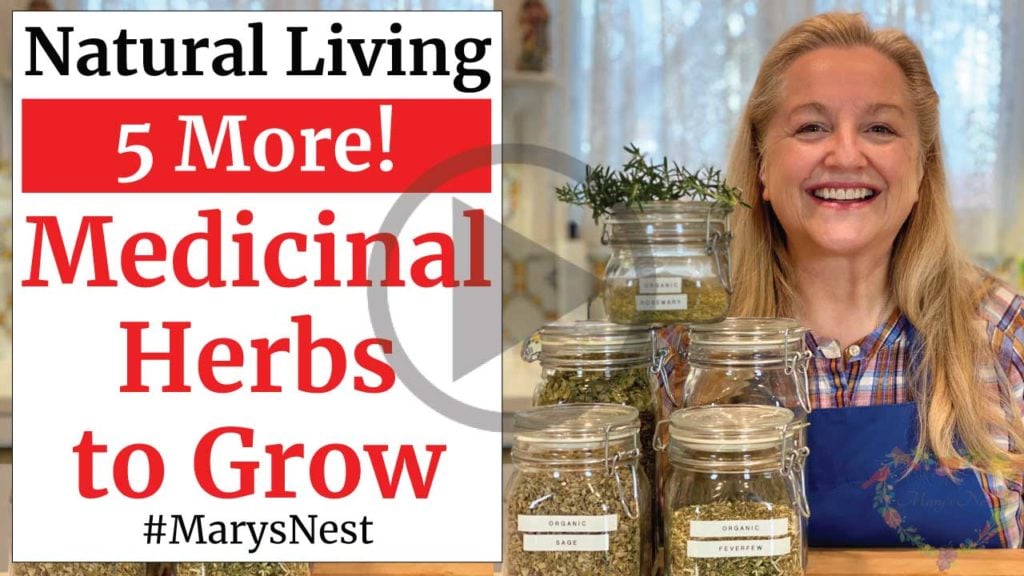
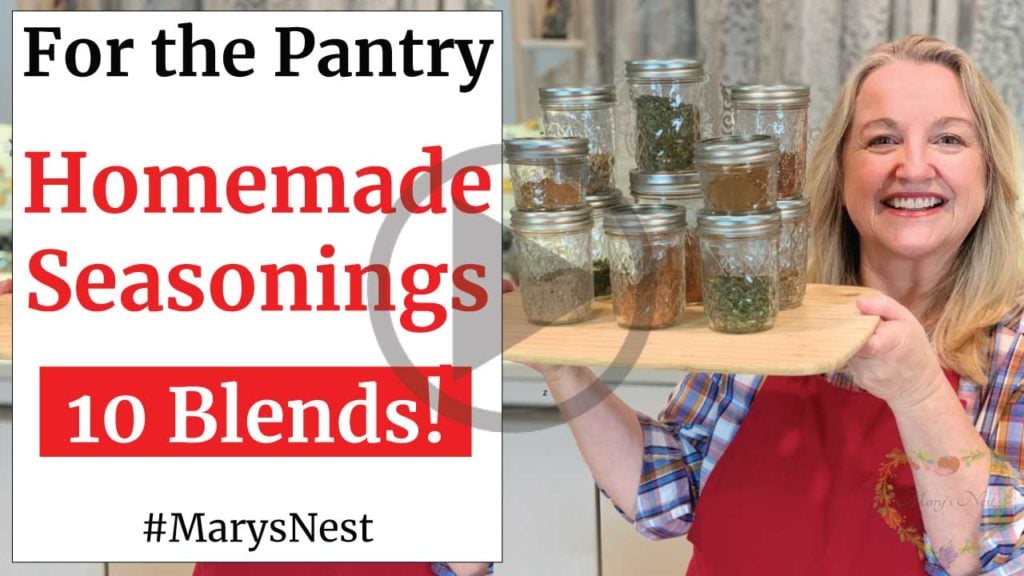
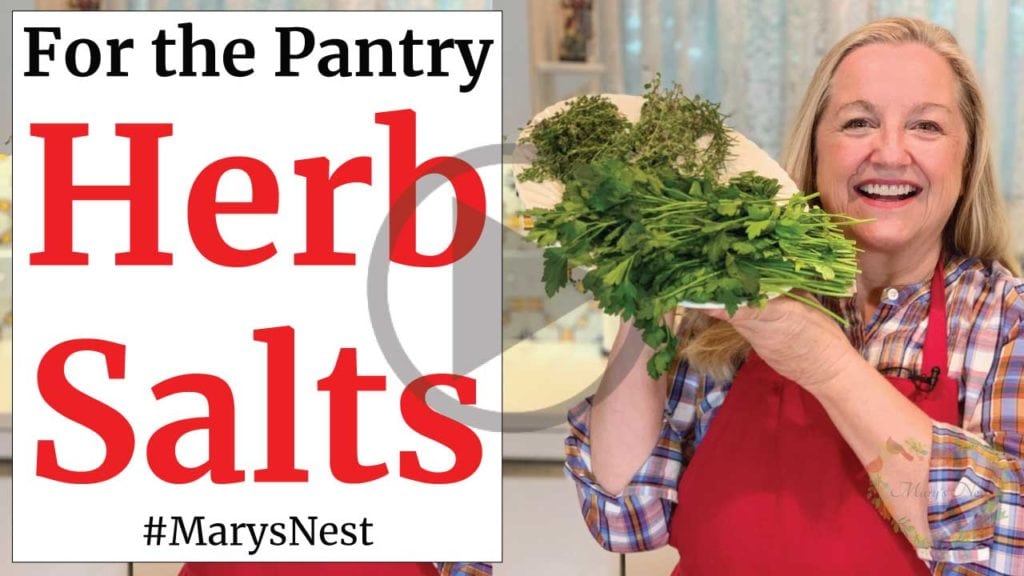
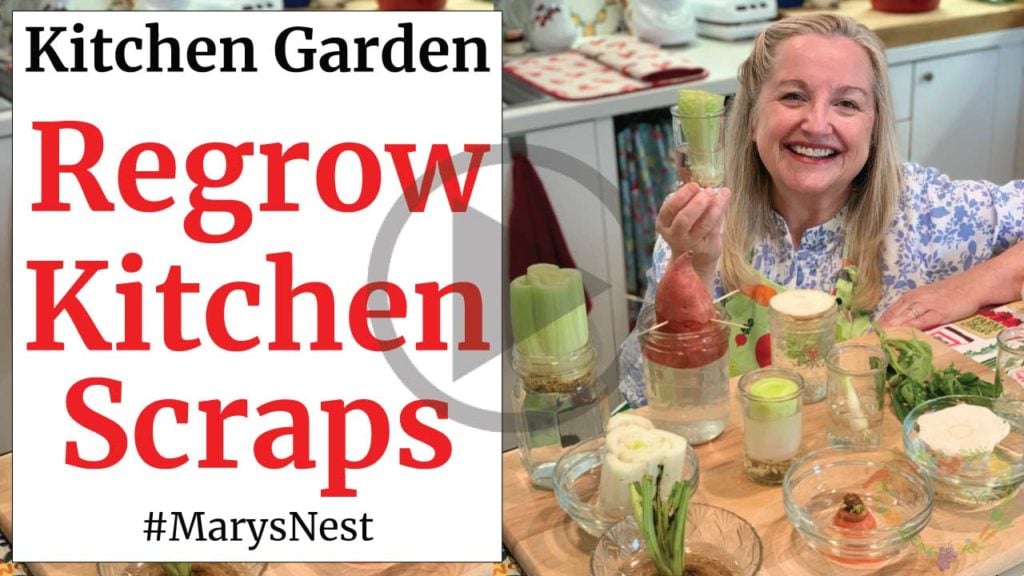
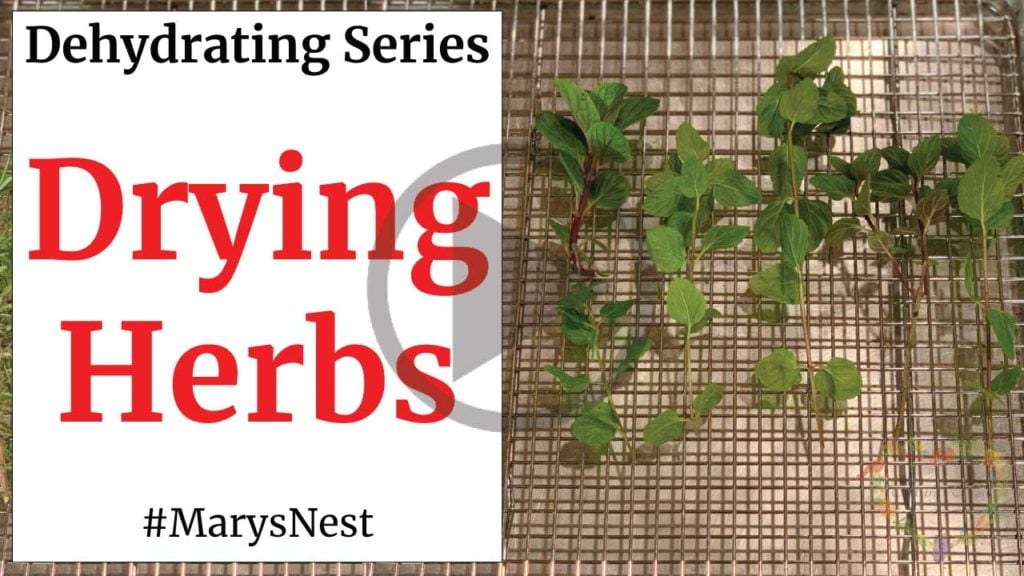



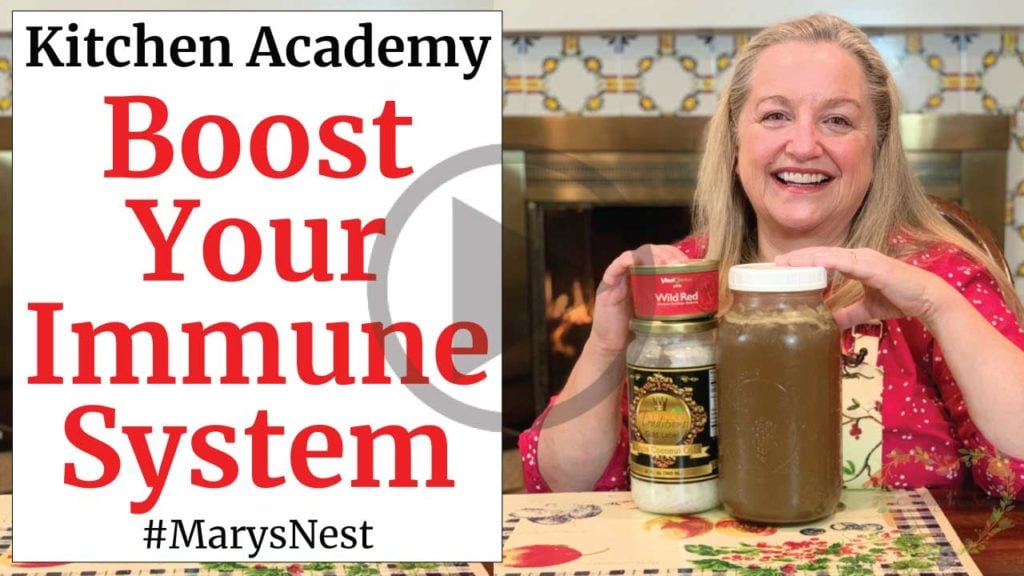
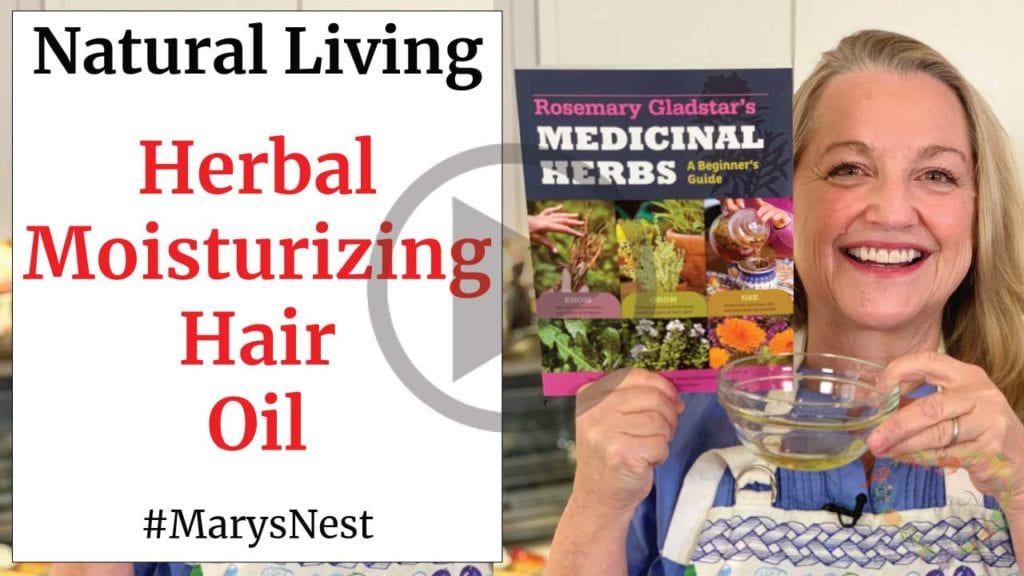


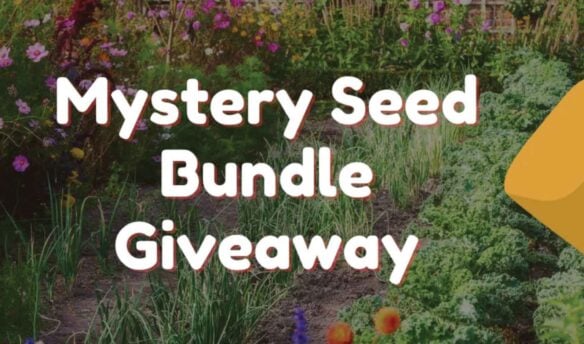

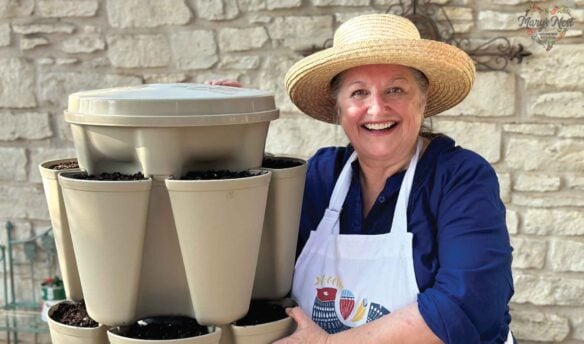
Thank you so much for the Mountain Rose Herb discount!! I have been studying herbal usage – both culinary and medicinal – for several years now. I live in an apartment so am unable to grow any substantial amount of my own herbs. I do forage for wild herbs/weeds for food and medicine, though. So, I am going shopping at Mountain Rose Herbs!!